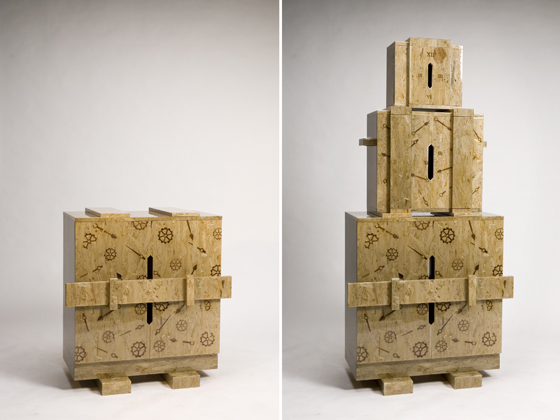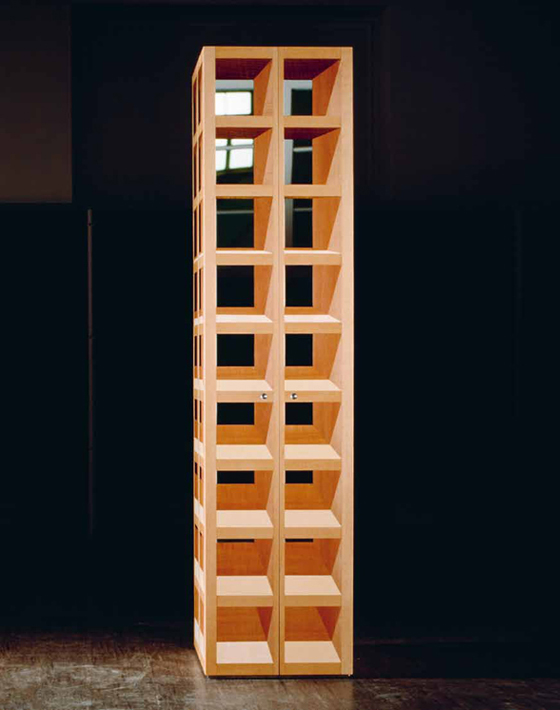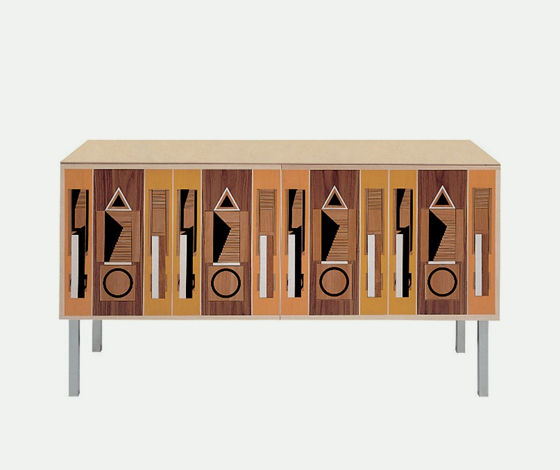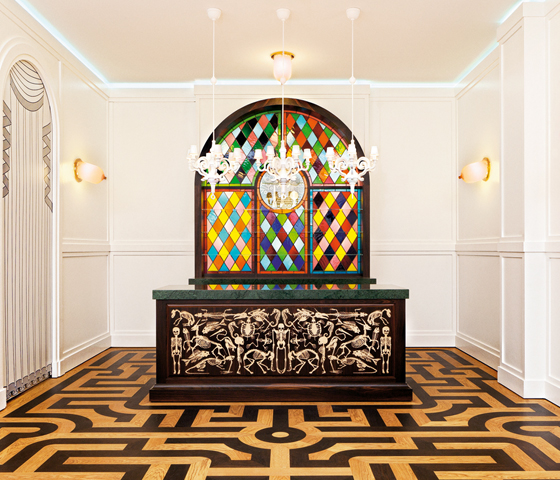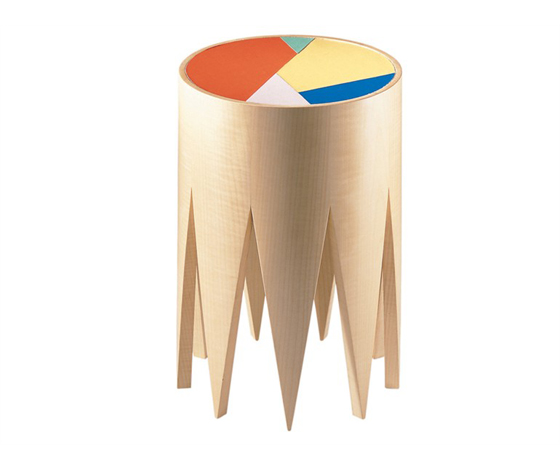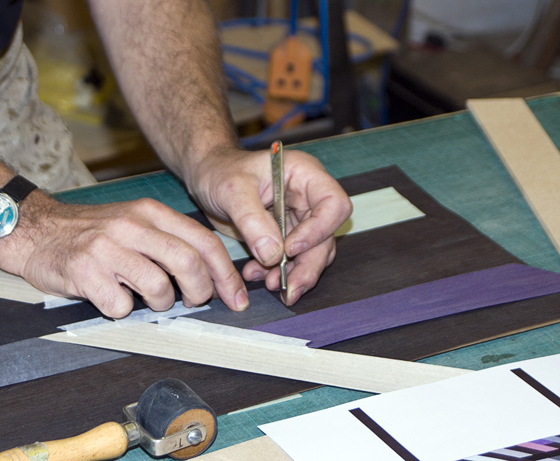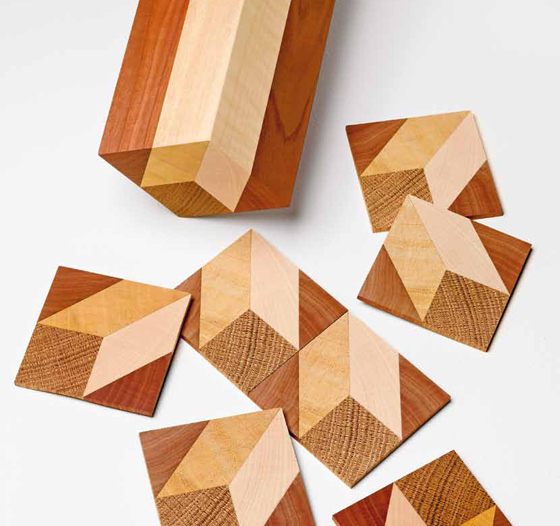Marquetry in modern design
Texto por Architonic
Suiza
17.02.12
We associate it with Louis XVI, art nouveau furniture and the wall decorations of clubhouses, but when we talk about it we are generally referring to something quite different. Marquetry, otherwise known as inlay work, does not generate a positive response with people who like to surround themselves with modern design, but in what follows Architonic will do its best to rehabilitate its image.
"Precious" table by Giuseppe Pruneri for Haute Material; inlay of italian walnut-tree and ivory, stainless steel structure
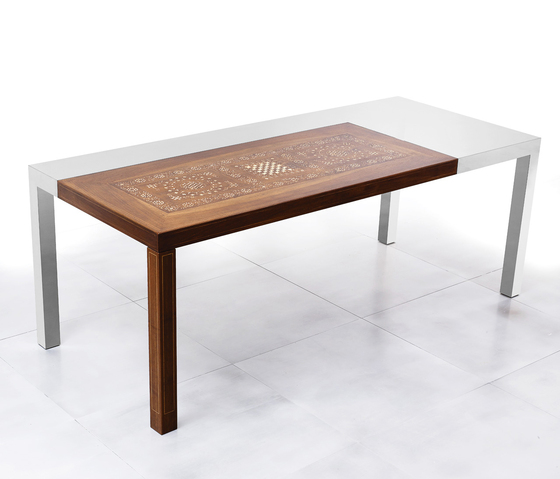
"Precious" table by Giuseppe Pruneri for Haute Material; inlay of italian walnut-tree and ivory, stainless steel structure
×"Precious" table by Giuseppe Pruneri for Haute Material; inlay of italian walnut-tree and ivory, stainless steel structure
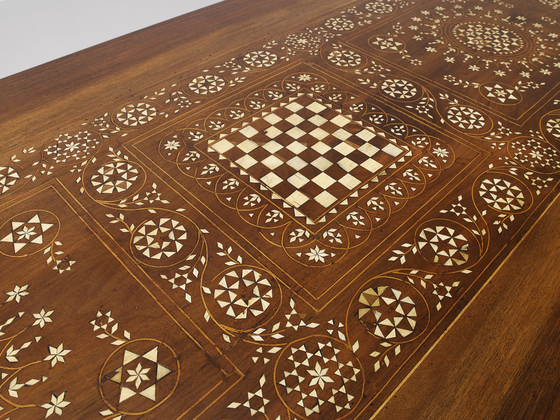
"Precious" table by Giuseppe Pruneri for Haute Material; inlay of italian walnut-tree and ivory, stainless steel structure
×It is generally agreed that marquetry consists of inlay work, and strictly speaking only inlays made of wood can be designated as such, although inlays of other materials are generally also referred to as marquetry. When we talk about wood inlays we are generally referring to marquetry. This is the most common technique of wood inlay work, which is created with high-quality veneers that are glued on to a wooden base. Thanks to CNC technology furniture with inlay work can nowadays be manufactured in series production.
"Tools inlays" by Formafantasma for Droog Design; box integrated in a table, the inlays show the tools which were used to make the funriture piece of OSB wood
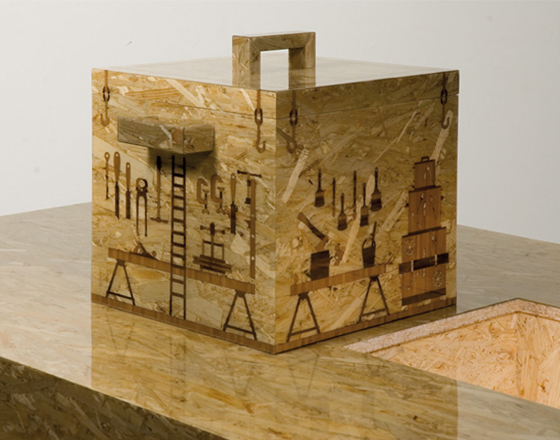
"Tools inlays" by Formafantasma for Droog Design; box integrated in a table, the inlays show the tools which were used to make the funriture piece of OSB wood
×The Studiolo which was created in the 15th century within the Palazzo Ducale in Urbino, Italy, is unique and represents the best example of this art form in its own age. The marquetry consists of a 'real' inlay with a range of trompe-l'oeil effects, for which inlays with their inherent two-dimensional form consisting of veneers of different colours are ideal. Optical illusions can easily be created by the playful representation of varying perspectives with their interplay of light and shade.
"Torre" cupboard by Robert and Trix Haussmann for Röthlisberger, wood veneers with mirror inlays
"Piedestal" chest of drawers by Hans Eichenberger for Röthlisberger; Trompe l'oeil inlays of pear wood veneer give the front a three-dimensional look
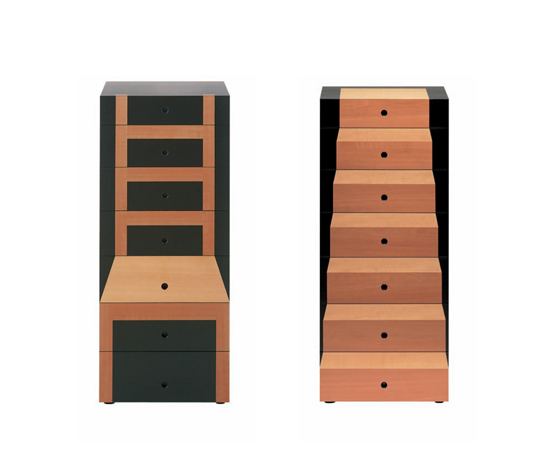
"Piedestal" chest of drawers by Hans Eichenberger for Röthlisberger; Trompe l'oeil inlays of pear wood veneer give the front a three-dimensional look
×Credenza Intarsia R.T.H.2 designed by Robert and Trix Haussmann and Bruno Longoni 1999, manufacturer Laurameroni
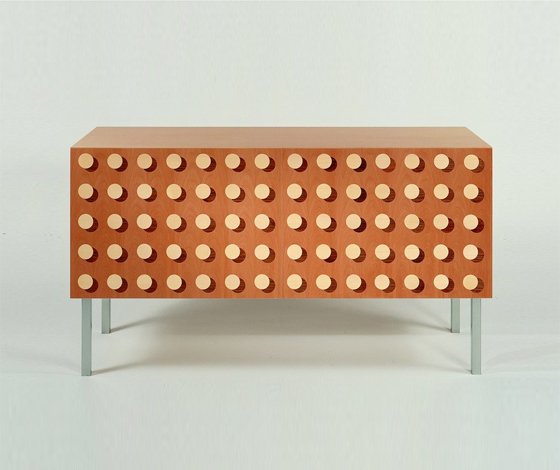
Credenza Intarsia R.T.H.2 designed by Robert and Trix Haussmann and Bruno Longoni 1999, manufacturer Laurameroni
×Credenza Intarsia A.R.2 designed by Aldo Rossi and Bruno Longoni 1999, manufacturer Laurameroni
It is not just by the use of different types of wood that spatial representations using inlays can be created. Inlay work using shadows with gradients is also possible by means of the kind of refined techniques used by the English designer and marquetry artist Toby Winteringham: he immerses the pieces of veneer to be inlayed in hot sand, which creates a slight charring in the shading of the wood. In addition to the techniques of traditional craftsmanship Winteringham also applies CNC milling machines. In addition to elaborate and intricate works his collection also contains simpler modern marquetry work which is no less sophisticated but is suited to larger production runs.
"Seven Codes" cupboard by Trix and Robert Haussmann for Röthlisberger, mirror with wood veneer inlay
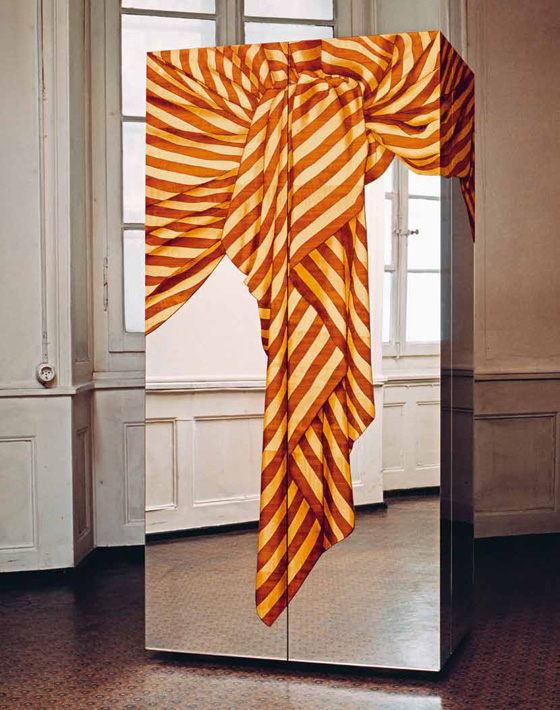
"Seven Codes" cupboard by Trix and Robert Haussmann for Röthlisberger, mirror with wood veneer inlay
×Inlays which create trompe-l'oeil effects have also been developed for the post modern designs created by Robert and Trix Haussmann for the Swiss firm of Röthlisberger. For this purpose the designers adopted historical techniques -- for example, for 'Lehrstück III' a repeating pattern of puzzle sections was produced by means of the same sawing techniques used in the 15th century.
"Shift" table by Toby Winteringham; marquetry design by Patternity.co.uk.; Made in Sycamore with marquetry in dyed veneers. Hand cut.

"Shift" table by Toby Winteringham; marquetry design by Patternity.co.uk.; Made in Sycamore with marquetry in dyed veneers. Hand cut.
×"Phase Bureau" by Toby Winteringham; marquetry design is by Patternity.co.uk; Fumed Oak with coloured veneers

"Phase Bureau" by Toby Winteringham; marquetry design is by Patternity.co.uk; Fumed Oak with coloured veneers
×"Bird" Sideboard by Toby Winteringham and his daughter Grace Winteringham; This marquetry design of birds, feathers and leaves is laser cut.
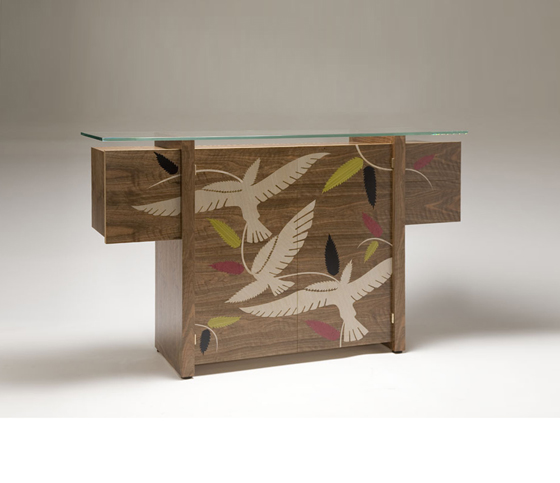
"Bird" Sideboard by Toby Winteringham and his daughter Grace Winteringham; This marquetry design of birds, feathers and leaves is laser cut.
×The cupboard "Torre", also produced by the Haussmanns for Röthlisberger, appears to the observer as a grid with empty spaces but in reality it is a trompe-l’oeil piece with solid surfaces. To create these illusions with areas of light and shade the craftsmen worked with unstained veneers in natural shades of maple, beach, pear and walnut.
The illusion of transparency is achieved by the integration of mirrors. One intricate detail is that the pencil which is the signature of these works is also decorated with inlays.
For Draenert the designer duo have created a dining table in the mannered post-modern style – a masterpiece of craftsmanship with inlays of walnut, maple, pear and ebony.
"Inlay" cupboard by Front for Porro; four different natural oak colours separated by a dark profile
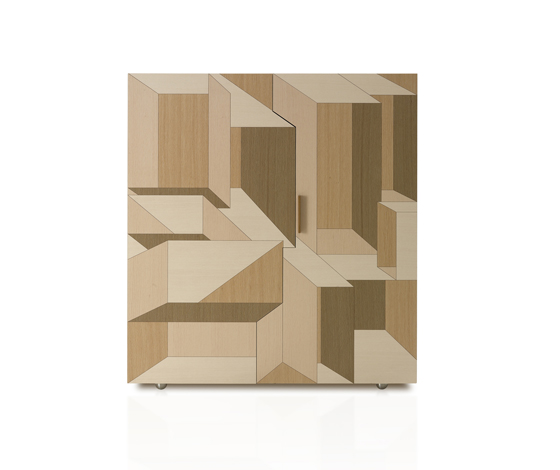
"Inlay" cupboard by Front for Porro; four different natural oak colours separated by a dark profile
×The "Frankfurter Möbel" furniture programme was also created for Draenert as part of a design series by the Frankfurt architects Norbert Berghof, Michael Landes and Wolfgang Rang, representing the German version of the post-modern and within it that of the Darmstadt-Frankfurt school.
The Frankfurt "Schrank F1" is an escritoire made of bird's-eye maple, ebony, bruyère, root timber, solid maple, bubinga, ivory, horn, brass, gold leaf, Lasa and Aosta marble, Bahia Blue granite etc. It has small safes, drawers and a writing top. Each one of the limited edition of 100 is numbered, dated and signed.
Cupboard "F1" "Frankfurter Möbel" furniture programme by Norbert Berghof, Michael Landes, Wolfgang Rang 1985/86 for Draenert
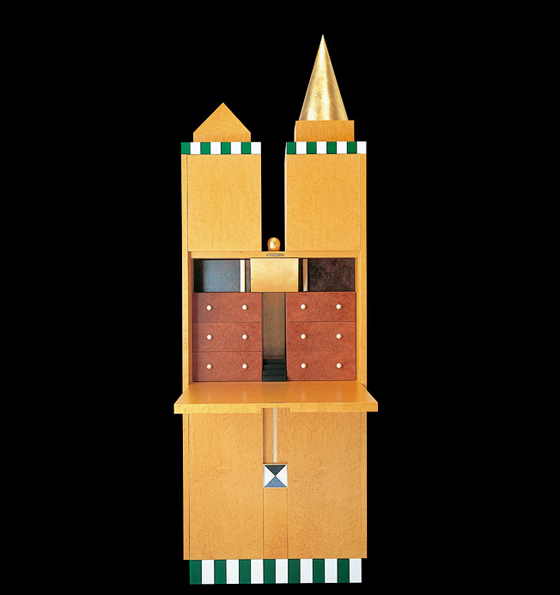
Cupboard "F1" "Frankfurter Möbel" furniture programme by Norbert Berghof, Michael Landes, Wolfgang Rang 1985/86 for Draenert
×As costly and exclusive masterworks the furniture in the "Frankfurter Möbel" range represents a reference to an elitist, bygone world. The "Job Lounge" by Studio Job is an ironic treatment of the same theme. The various designs, materials and production techniques in this room are quotes from the impressive work implemented by Studio Job and include cast bronze, stained glass in lead glazing form, ceramics, marquetry, papier-mâché, rusted iron, woven textiles and precious Venini glass. The marquetry of the unusual and very beautiful wood inlays of the bar represents deformed skeletons while the stylish parquet floor features a bewildering labyrinth.
Groninger Museum Job Lounge; Photgrapher: Robert Kot © Groninger Museum
Private Residence in Amsterdam by Marcel Wanders; Photo © Marcel Wanders
The luxurious apartment in Amsterdam designed by Marcel Wanders lies somewhere between citing or even evoking a past epoch and making an ironic comment on it. The parquet has been created with exquisite inlay work and all the surfaces within the rooms feature luxurious decoration, ornaments and the finest materials. Wanders has managed this balancing act by means of creating a reduction and abstraction in form, skilfully reducing the eclectic mix of styles to a single common denominator.
Detail of the parquet in a private Residence in Amsterdam by Marcel Wanders; Photo © Marcel Wanders
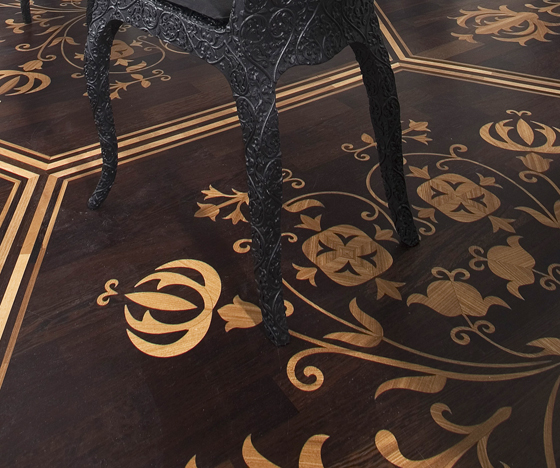
Detail of the parquet in a private Residence in Amsterdam by Marcel Wanders; Photo © Marcel Wanders
×Marquetry is not often found in its intrinsic form, but in an extended sense the installation "The Wasteland" created by Juan Muñoz in the year 1987 could be described as such. Here too we find the trompe l'oeil effect in that our perception of the room is visually distorted by the work.
Juan Muñoz The Wasteland, 1987 Collection of Elayne and Marvin Mordes, USA © The Estate of Juan Muñoz; Photo © Tate Photography

Juan Muñoz The Wasteland, 1987 Collection of Elayne and Marvin Mordes, USA © The Estate of Juan Muñoz; Photo © Tate Photography
×"Remida" by Zanotta, Design Fortunato Depero; Maple with cowhide inserts
Inlay is therefore very much alive in modern design and we are sure to encounter it more often in future, because the techniques of traditional craftsmanship are constantly being rediscovered and in their adapted form provide the foundation for a new avant-garde. The CNC milling machine is sure to support the revival of the old art of marquetry.
Toby Winteringham at work doing hand cut marquetry
Pattern of sawn puzzle sections for marquetry work



